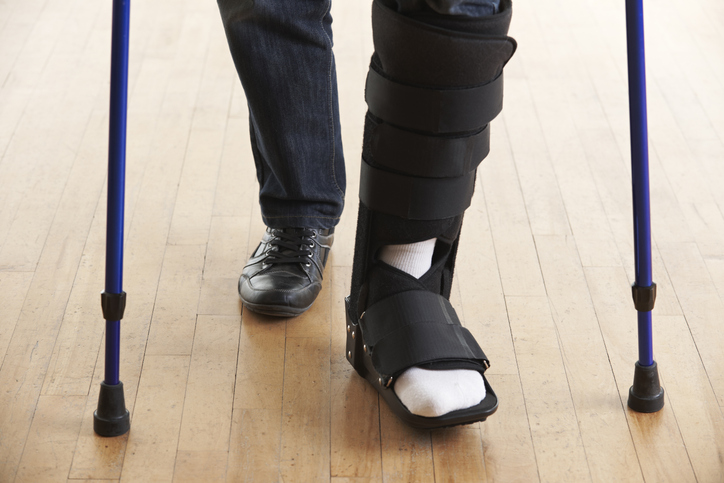How can you put a price on the pain and suffering that might accompany a severe car accident? Quantifying the objective and subjective damages that might arise from these accidents is complex. However, receiving compensation for this pain and suffering not only provides financial relief from these often traumatic events but also might make the victim feel as though justice has been served.
Determining pain and suffering damages in car accident cases in Georgia involves evaluating several factors. Courts will examine the subjective and objective elements of the individual’s experience following the accident.
How Do You Calculate Damages For Pain And Suffering?
Pain and suffering damages are not easily quantifiable, unlike medical bills and lost wages. However, understanding the methods and factors that influence these calculations is crucial for plaintiffs and attorneys.
Pain and suffering refer to the physical pain and emotional distress a victim endures due to a car accident. It encompasses 1) physical pain, such as ongoing pain, discomfort, and limitations from injuries, and 2) emotional distress, such as anxiety, depression, PTSD, and other mental health impacts.
Methods to Calculate Pain and Suffering in Georgia
Multiplier Method: One common approach is the multiplier method. Here’s how it works:
- Step 1: Calculate economic damages (medical bills, lost wages, etc.).
- Step 2: Select a multiplier between 1.5 and 5 based on the severity of the injury.
- Step 3: Multiply the economic damages by the selected multiplier.
Example: If your economic damages are $20,000 and the multiplier is 3, your pain and suffering damages would be $60,000.
Per Diem Method: Another approach is the per diem (daily rate) method:
- Step 1: Assign a daily rate to the pain and suffering endured.
- Step 2: Multiply this rate by how many days you have experienced pain and suffering.
Example: If the daily rate is $200 and you have suffered for 100 days, your pain and suffering damages would be $20,000.
Major Factors Considered By The Courts For Pain and Suffering
- Nature and Extent of Injuries:
In these situations, the courts will look at the severity and type of injuries sustained, whether the injuries are temporary or permanent, and how the injuries affect the plaintiff’s daily life and activities. More severe injuries generally justify higher multipliers or daily rates. - Medical Treatment and Expenses:
The Courts will examine the duration and type of medical treatment required, the necessity and frequency of future medical care, and the costs incurred for medical treatment, therapy, and medication. - Physical Pain and Suffering:
The Courts will look at the intensity and duration of physical pain and the documentation of pain through medical records and testimony. - Emotional Distress and Mental Anguish:
Evidence of emotional trauma, such as anxiety, depression, or PTSD, will be examined, as well as the impact on the plaintiff’s mental health and overall well-being. - Impact on Quality of Life:
The Courts will examine how the injuries affect the victim’s ability to perform daily activities, changes in lifestyle and the inability to engage in hobbies or activities, loss of enjoyment of life, and reduced ability to perform daily tasks. - Permanent Disability or Disfigurement:
The Courts will calculate pain and suffering damages based on any lasting physical impairments or visible scarring and how these conditions affect the plaintiff’s future life and employment prospects. - Duration of Suffering:
Courts will look at the length of time the plaintiff has experienced pain and suffering since the accident and the projected future pain and suffering related to the injuries. - Testimonies and Evidence:
It will be helpful to hear statements from medical experts, psychologists, and other professionals and testimonies from the plaintiff, family members, and friends regarding the plaintiff’s pain and suffering. - Impact on Relationships:
Courts will consider the effect of the injuries on personal relationships and social interactions, as well as the strain on marital or family relationships due to the injuries. - Victim’s Age and Health:
Younger victims or those in good health before the accident may receive higher compensation. - Comparative Fault:
Courts will examine the extent to which the plaintiff’s actions may have contributed to the accident.
Evidence Supporting Pain and Suffering Claims
To successfully claim pain and suffering damages, you need strong evidence, such as:
- Medical Records: Documentation of injuries and treatments.
- Therapy Records: Notes from psychological or psychiatric treatments.
- Personal Journal: Daily logs describing pain levels and emotional struggles.
- Witness Testimony: Statements from family, friends, or colleagues about the impact on your life.
Takeaway
Calculating pain and suffering from car accidents in Georgia requires considering multiple factors and methods. Whether using the multiplier or per diem method, gathering substantial evidence and seeking legal assistance are crucial to ensure fair compensation. By understanding these elements, victims can better navigate their claims and achieve justice for their suffering.Gautreaux Law, LLC has experienced Georgia attorneys who can help you compile the necessary documentation and expert testimony, advocate for fair compensation for you during settlement negotiations, and work with you to present a compelling case to the jury if your case goes to trial. If you need further assistance with your pain and suffering claim or other personal injury matters, don’t hesitate to contact Gautreaux Law.



